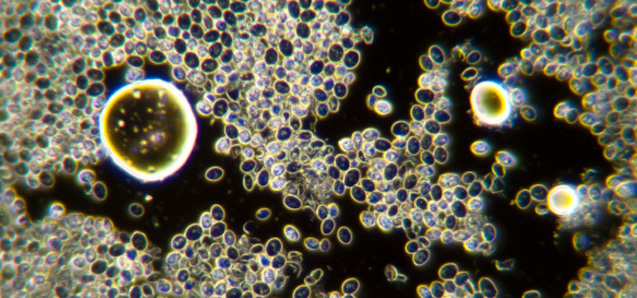
In eukaryotic RNA, the methylation of adenosine at the N6 position to form N6-methyladenosine (m6A) is the most common and abundant postsynthesis modification known. Until recently, the biological significance of this RNA modification has remained unclear due to technical and experimental limitation. These include: detection methods that are mostly limited to immunoprecipitation; low resolution mapping of m6A around methylation sites which cause precise locations to be unclear; and the lack of an experimental model for depletion of the methylation complex in mammals, limiting the ability to gain functional insight of RNA methylation. To overcome these limitations, researchers at the Broad Institute of MIT and Harvard in Cambridge, Massachusetts studied the RNA methylation in the yeast Saccharomyces cerevisiae. Unlike in mammals, mRNA methylation in yeast occurs only during meiosis and deletion of the methylation complex is not lethal, making yeast an ideal experimental model for uncovering the role of this modification. The authors used a highly optimized m6A-seq technique on mRNA isolated from a Saccharomyces cerevisiae strain undergoing meiosis, as well as methylation-deficient control strains in order to obtain high resolution methylation maps at nearly single-nucleotide resolution. Their studies also identified several similarities between mRNA methylation in yeast and mammals, thereby confirming that yeast is a relevant model for m6A methylation analysis.
Their findings are summarized below:
- Identified 1,308 high-confidence, putatively methylated sites within 1,183 transcripts.
- Methylation occurs at an RGAC core consensus sequence
- Temporal methylation profiles are determined in cis (locally) via the inherent methylatability of the transcript and in trans (globally) via the interaction of components of the methylation machinery
- Nucleolar colocalization of the RNA methyltransferase complex (MIS), which is comprised of Ime4, Mum2 and Slz1, is required for mRNA methylation. Slz1 regulates entry of the MIS complex to the nucleolus.
Source: Read more about their findings and get all of the details here: Schwartz et al., High Resolution Mapping Reveals a Conserved, Widespread, Dynamic mRNA Methylation Program in Yeast. Cell (2013), http://dx.doi.org/10.1016/j.cell.2013.10.047

